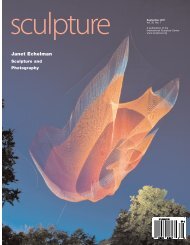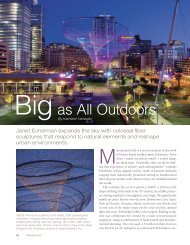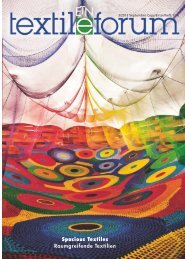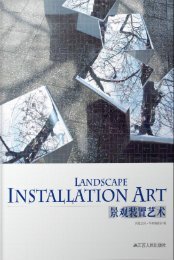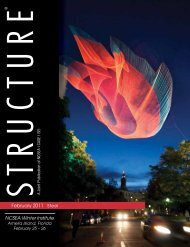Sculpture - Janet Echelman
Sculpture - Janet Echelman
Sculpture - Janet Echelman
Create successful ePaper yourself
Turn your PDF publications into a flip-book with our unique Google optimized e-Paper software.
Over the past two years, <strong>Echelman</strong> has<br />
been working on two of her most ambitious<br />
projects. In Phoenix, Arizona, she recently<br />
completed a project for a large civic park<br />
adjacent to the Arizona State University<br />
campus, one of the fastest growing universities<br />
in the nation. It is a large, increasingly<br />
cosmopolitan municipal site. In addition<br />
to its relationship to the campus, the<br />
park is sited between two light rail systems.<br />
<strong>Echelman</strong> was brought in to work<br />
with the existing conditions and to help<br />
address the inevitable tensions and extract<br />
the potentialities produced by competing<br />
needs and expectations.<br />
Her project is a blue, bowl-shaped,<br />
diaphanous web suspended high over the<br />
site. 2 Like a number of her other works,<br />
Her secret is patience (2009) is sensitive<br />
to the wind and responds to and continuously<br />
scores (with both melodic and<br />
percussive moments) the changing conditions<br />
on the site. As <strong>Echelman</strong> suggests,<br />
the materials and engineering produce Above and opposite: Water Sky Garden, 2009. Painted<br />
a sensation of embodied movement galvanized steel, braided GORETERNARA® architectural<br />
like breathing—an endless cycle of fiber net, cedar, water-aeration system, plants, and<br />
inhalations and exhalations, expansion<br />
and contraction. Beneath the in Richmond, British Columbia.<br />
lighting, total area approx. 75,000 sq. ft. Work installed<br />
enormous, yet seemingly immaterial<br />
and intangible form, 20 light poles are programmed with color patterns that change<br />
seasonally. Their rhythmic orchestration introduces another character of movement<br />
and temporality.<br />
Hovering nearly 100 feet above the new Phoenix Civic Space, the moving blue form<br />
serves as a coordinate and marker—a point in space from which people, from a great<br />
distance, can situate and navigate. I imagine that readings of the project will evolve—<br />
as they generally do in public art projects. Like <strong>Echelman</strong>’s other work, Her secret is<br />
patience is neither entirely bewildering nor benign, neither fully formed nor dependably<br />
apprehended. Whether meteorological or nuclear, the suggestion of unidentifiable<br />
imminence is a quiet, resonant chord. Its sensitive choreography in the desert winds,<br />
ultimately, may offer more pleasing, if enigmatic, associations. <strong>Echelman</strong> anticipates<br />
that the dynamic qualities of the project will serve as a summons or magnetic force<br />
to create a center that does hold.<br />
Her other major project in North America is Water Sky Garden at the Richmond Olympic<br />
Oval in British Columbia, Canada. 3 Commissioned for the 2010 Vancouver Olympic Winter<br />
Games by the City of Richmond, <strong>Echelman</strong> worked with a large urban design team of architects,<br />
engineers, landscape architects, and public art consultants. As in Phoenix,<br />
That evening, I went to the beach for a walk and a swim, as I’d<br />
done every evening after work at the foundry, and I watched the<br />
fishermen bringing in their nets. The nets were large rounded<br />
forms dotting the shore, and I remember thinking, “There is volumetric<br />
space without weight, without mass.” These adaptable<br />
nets could be a strategy for defining monumental forms that<br />
would later fold up into small light containers. The next day I<br />
made some sketches, drilled holes around the edges of each of<br />
my tiny bronzes, and walked down to the beach with my friend<br />
to ask some of the fishing families if they would knot a net for<br />
me in the shapes I had drawn. Then I took the mosquito netting<br />
that I had been sleeping under, together with my sketches, up<br />
the street to the local tailors. I was told that all the fishermen<br />
were Hindu and all the tailors were Muslim, yet we had the village<br />
working together with this American outsider producing a dozen<br />
“things,” which nobody imagined to be sculpture at all.<br />
Based on an interview with landscape architect Suzanne Ernst.<br />
© PETER VANDERWARKER<br />
36 <strong>Sculpture</strong> 28.7



